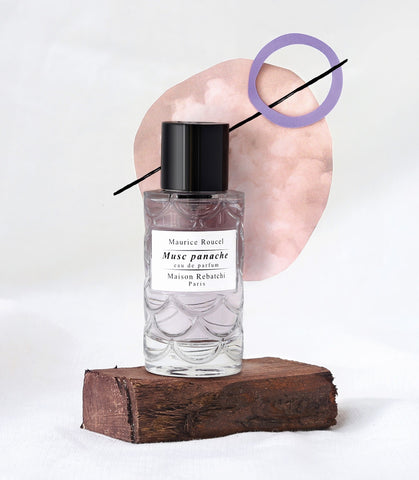A brief history
Maybe we should say before we go any further that all musk used in modern Western perfumery is synthetic. Musk can be very difficult to talk about because of its controversial associations. In the bad old days, all musk was of animal origin, being taken from the subcutaneous rear glands of a certain oriental mountain deer. It is not in fact necessary to kill the animal to do this; but of course, most antique musk gatherers did precisely that because it simply saved time and bother. Nowadays any trade in real musk oil is stringently monitored and licensed, but the whole subject is so delicate and controversial that Western perfumers prefer to avoid any contamination by association. Instead they put all their faith in synthetic musks. This is especially so nowadays since highly effective artificial musks can be made in the laboratory from a myriad of plant oils, chemical molecules and even from the dried droppings of small rodents: the heavenly hyraceum!
Why should musk cast such a spell? Well firstly it has always been a celebrated aphrodisiac. The ‘seeds’ or ‘grains’ which produce true musk oil do not in fact have anything to do with the animal’s reproductive system. However, the antique musk wearers (and musk eaters) believed that they did so because of the grains’ suggestive location in the rear of the deer’s anatomy. Then, too, musk is often described as having an “animalic smell” referencing the Beast that lurks within us all. Others describe the fragrance as earthy, oily, sweet or similar to that of warm, aroused human skin. In short: musk is a sexy smell.
A deep-rooted aroma
And, most importantly, musk is a fixative. It clings to the skin and encourages oils with which it is mixed to become equally tenacious. The smell of animal musk lasts for centuries which is why the oil was once mixed into the bricks and mortar of palaces, mosques and cathedrals. The Empress Josephine’s chateau at Malmaison - where those famous Redoute roses bloomed in the gardens - was enchanted with the musk perfumes so prodigally used by the owner. The odour of musk was said to linger in her Swan Bedroom for 150 years after Josephine’s death in 1814 - until the renovators and restorers did their fatal work.

Musk gets into things: - I remember a very musky winter when everything tasted of it: it seemed to be even inside a new loaf of bread. Tea clippers like the Cutty Sark refused to carry shipments of musk with their precious tea cargo for this very reason.
Musk in the modern day
Musk has other properties. It is thought of as ‘dirty’ - maybe because of its animalic associations - but, really, modern musks are mostly not so. They are voluptuous and seductive. Musc Panache is a gorgeous example of an accomplished modern musk with a crystalline iris heart. The currently fashionable transparent musks are sheer, milky, creamy, powdery or fresh - like the aired laundry scent that people so often look for. Or again they are reminiscent of clean animal fur or human hair.
Musk gives substance, interest and light-hearted eroticism to a perfume. As in the musk deer, it marks the wearer’s trail and lingers in a pronounced sillage. Musks are flirtatious. At this time of year, they imbue scent with a light cosy warmth, like softest suede or silky cashmere. Musk envelopes the body like a second skin. It softens florals, adds eroticism to orientals and can appease excessive briskness in a chypre. Musk can be work in progress or be a delight ‘tout seul’! Sylvaine Delacourte loves musk so much that she has created a whole range to celebrate it in all its moods from baby clean Dovana to smoky herbal Helicriss: each perfume as soft and comforting as cashmere wool.
As I finished this piece I went outside and smelled a patch of early violets. Every year I am amazed and slightly shocked by their almost meaty muskiness. The thrill of musk is all around us!


